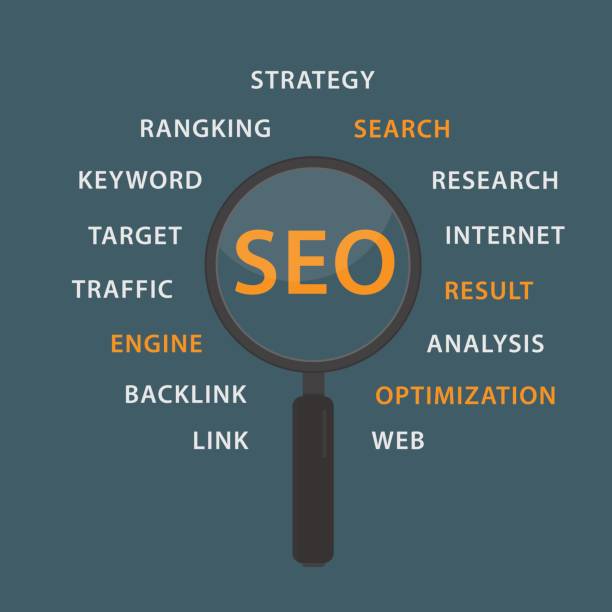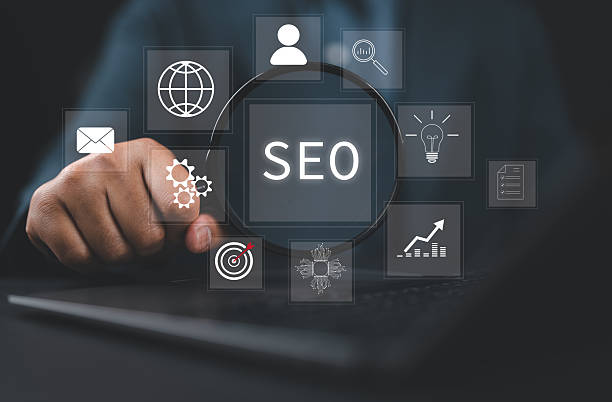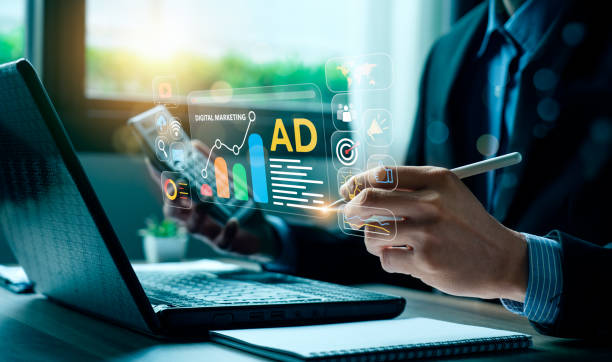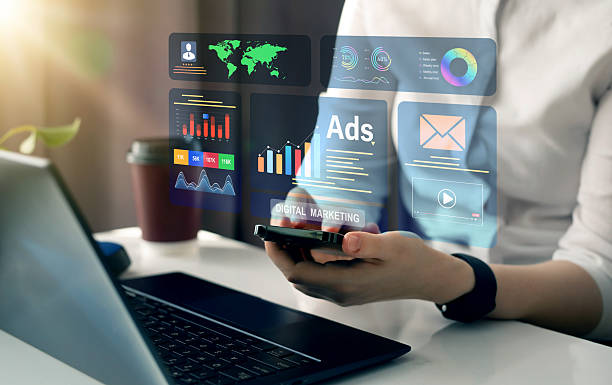What is On-Page SEO and Why is it Important?

What is On-Page SEO and Why is it Important?
On-Page SEO, also known as On-Page SEO, refers to a set of techniques and optimizations performed within a website to improve its ranking in search engines like Google.
This includes optimizing content, keywords, title tags, meta descriptions, URL structure, and more.
The importance of On-Page SEO lies in its ability to help search engines better understand your site’s content and display it to relevant users.
In fact, On-Page SEO is the foundation for SEO success, and without it, your efforts in Off-Page SEO alone will not be sufficient.
In today’s world, online competition is fierce, and without a strong SEO strategy, it will be very difficult to be seen in search results.
On-Page SEO helps you attract more organic traffic to your site, which is usually higher quality and more targeted than other types of traffic.
By optimizing your content and site structure, you can also improve the user experience and increase conversion rates.
User experience is one of the most important factors influencing website SEO.
#Keywords are one of the main pillars of On-Page SEO.
Choosing the right keywords and using them strategically in your content and site tags helps search engines understand what your site is about.
Additionally, optimizing images with ALT tags and appropriate file naming can help improve your site’s ranking in image search results.
Therefore, On-Page SEO is a vital component for any website that wants to rank higher in search results and attract more traffic.
By properly implementing On-Page SEO techniques, you can transform your site into a valuable resource for both users and search engines.
Are you tired of your e-commerce site having visitors but no sales? RasaWeb solves your core problem with professional e-commerce website design!
✅ Significantly increase sales with targeted design
✅ Flawless user experience for your customers
⚡ Get a free consultation!
Keyword Research – Finding the Best Opportunities

Keyword Research – Finding the Best Opportunities
#Keyword research is the process of identifying words and phrases that users type into search engines to look for information, products, or services.
This process helps you understand what your audience is looking for and how you can optimize your content to rank higher in search results.
Keyword research is one of the most crucial steps in On-Page SEO, because without it, your efforts to optimize your site may be fruitless.
To start keyword research, you can use various tools such as Ahrefs Keywords Explorer, SEMrush Keyword Magic Tool, Ubersuggest, and Google Keyword Planner.
These tools provide you with information such as search volume, competition level, and related keywords.
Using this information, you can select keywords that have both high search volume and less competition.
When conducting keyword research, also look for Long-Tail Keywords.
These keywords are usually longer and more specific, have lower search volume, but higher conversion rates.
For example, instead of the keyword “shoes,” you can use the keyword “buy men’s athletic shoes for running.”
By targeting long-tail keywords, you can attract more targeted traffic to your site.
Also, pay attention to Search Intent.
User intent means what the user is looking for when searching a specific keyword.
Are they looking for information, want to buy a product, or are they looking to solve a problem? By understanding user intent, you can design your content to best meet their needs.
On-Page SEO is a fundamental part of online marketing success and helps you achieve your business goals.
Optimizing Titles and Meta Descriptions

Optimizing Titles and Meta Descriptions
Titles and Meta Descriptions are important elements in On-Page SEO that appear in search results and play a significant role in attracting users to your site.
The title is what appears at the top of the search result, and the meta description is a summary of the page’s content displayed below the title.
Optimizing these two elements can help improve your site’s click-through rate (CTR).
To optimize titles, use the main keywords of the page in the title.
The title should be engaging and relevant to the page’s content, and have a maximum of 60 characters to be fully displayed in search results.
Avoid using duplicate titles; each page should have a unique title.
Meta descriptions should also be an accurate and compelling summary of the page’s content.
Use relevant keywords in meta descriptions and try to encourage users to click on your link.
Meta descriptions should have a maximum of 160 characters.
Also, mention the benefits of visiting your site in the meta description.
A good meta description can significantly increase your #click_through_rate.
| Feature | Description |
|---|---|
| Max Title Length | 60 characters |
| Max Meta Description Length | 160 characters |
| Use of Keywords | Essential |
| Uniqueness | Essential |
Remember that titles and meta descriptions are the first things users see in search results, so optimizing them can significantly impact your site’s traffic.
On-Page SEO is an ongoing process and requires regular attention.
Content Optimization – Producing High-Quality and Engaging Content

Content Optimization – Producing High-Quality and Engaging Content
Content is King! This phrase is very common in the world of On-Page SEO and indicates the importance of content in ranking websites in search engines.
High-quality and engaging content not only attracts users but also makes them spend more time on your site, increasing the likelihood of their return.
These factors signal to search engines that your site is a valuable resource for users, consequently improving your site’s ranking.
To produce high-quality content, you must first understand your audience’s needs and interests.
Keyword research helps you understand what users are looking for and what questions they have.
Then, create content that answers these questions and meets user needs.
Your content should provide accurate and useful information and avoid spelling and grammatical errors.
Also, try to organize your content in a way that is easy to read.
Use subheadings, lists, and images to break down the text into smaller sections and improve its readability.
In addition to quality, also pay attention to content engagement.
Using an appropriate tone and attractive images and videos can capture users’ attention and encourage them to read the content.
Also, try to keep your content up-to-date and add new information to it.
Old and outdated content loses its value and may negatively impact your site’s ranking.
On-Page SEO can differentiate you from your competitors.
Using #keywords in content is also very important, but they should be used naturally and in moderation.
Excessive use of keywords (Keyword Stuffing) can negatively impact your site’s ranking.
Try to use keywords in titles, subheadings, paragraphs, and image ALT tags.
A strong content strategy is the foundation of successful On-Page SEO.
Tired of losing business opportunities due to a unprofessional corporate website? Don’t worry anymore! With RasaWeb’s professional corporate website design services:
✅ Your brand’s credibility and professionalism will increase.
✅ You will attract more customers and sales leads.
⚡ Get a free consultation right now!
Image Optimization – Reducing Size and Using ALT Tags

Image Optimization – Reducing Size and Using ALT Tags
Images play an important role in the attractiveness and better understanding of site content, but if not optimized correctly, they can negatively impact page load speed and On-Page SEO ranking.
Image optimization includes reducing file size, using appropriate formats, and using ALT tags.
Large image sizes can slow down page loading, which can lead to user dissatisfaction and a decrease in site ranking in search engines.
To reduce image size, you can use online tools like TinyPNG and ImageOptim.
These tools reduce image size without compromising quality.
Also, use the appropriate format for images.
JPEG format is suitable for images with many colors, and PNG format is suitable for images with text and graphics. WebP formats are very popular today.
ALT tags (Alternative Text) are tags added to images that provide a short description of the image’s content.
These tags help search engines understand what the image is about and display it in image search results.
Additionally, ALT tags are very useful for users who cannot see images for various reasons (such as visually impaired users).
When writing ALT tags, use keywords relevant to the image and try to provide an accurate description of the image’s content.
Avoid using duplicate ALT tags; each image should have a unique ALT tag.
Image optimization is an important part of On-Page SEO and can help improve user experience and your site’s ranking.
On-page SEO includes optimizing different parts of the website.
URL Structure Optimization – Creating Readable and Relevant URLs

URL Structure Optimization – Creating Readable and Relevant URLs
The URL (Uniform Resource Locator) structure plays an important role in On-Page SEO and user experience.
Readable and relevant URLs help search engines understand what the page is about and also help users easily find the page they are looking for.
A good URL should be short, descriptive, and include relevant keywords.
To create readable URLs, use the main keywords of the page in the URL.
Avoid using incomprehensible numbers and letters in the URL, and try to design the URL to match the content of the page.
Also, use hyphens (-) to separate words in the URL.
Using underscores (_) is not recommended, as it may be considered a single word by search engines.
The site’s URL structure should be logical and organized.
Try to design URLs in a way that reflects your site’s structure.
For example, if you have a page about “sports shoes,” its URL could be:
www.example.com/sports/sports-shoes
This URL indicates that the sports shoes page is located in the sports section of the site.
This type of URL structure is very useful for both search engines and users.
On-Page SEO shows its results by doing these tasks.
Avoid creating long and complex URLs.
Long URLs may be ignored by search engines, and users also find them difficult to remember.
Optimizing URL structure is an important step in On-Page SEO and can help improve your site’s ranking.
Website Speed Optimization – Increasing Page Load Speed

Website Speed Optimization – Increasing Page Load Speed
Website speed is one of the important factors in ranking websites in search engines and user experience.
Users expect web pages to load quickly, and if a site is slow, users may leave it and go to another site.
Google also considers site speed as a ranking factor, and sites with higher speeds achieve better rankings in search results.
On-Page SEO is essentially optimizing the site from within.
To increase site speed, you can take various actions.
One of the most important actions is image optimization.
Large images can slow down page loading speed.
To reduce image size, you can use online tools like TinyPNG and ImageOptim.
Also, use the appropriate format for images.
JPEG format is suitable for images with many colors, and PNG format is suitable for images with text and graphics.
In addition to image optimization, you can use #cache.
Caching stores site information in the user’s browser so that the site loads faster on subsequent visits.
You can also use Content Delivery Networks (CDNs).
CDNs store site information on various servers around the world so that users can access the site from the closest server to them.
This can significantly increase page load speed.
This table will help you understand this topic better.
| Factor | Description | Solution |
|---|---|---|
| Image Size | High-volume images slow down the site | Optimize images using compression tools |
| Using Cache | Not using cache causes information to reload on every visit | Enable browser and server caching |
| Content Delivery Networks (CDN) | Not using CDN slows down user access from different parts of the world | Use CDN to distribute content on various servers |
Website speed optimization is an ongoing process and requires regular attention.
By increasing site speed, you can improve user experience and increase your site’s ranking in search engines.
Remember that On-Page SEO is a dynamic process and requires continuous review and improvement.
Responsive Optimization – Website Compatibility with Various Devices

Responsive Optimization – Website Compatibility with Various Devices
Today, many users access the internet via mobile phones and tablets.
Therefore, it is very important that your site is compatible with various devices and displays correctly on them.
Responsive Design means that your site’s design automatically adapts to the screen size of different devices.
On-Page SEO is meaningless without responsiveness.
Responsive sites offer a better user experience, and users can easily navigate your site without needing to zoom in or scroll horizontally.
Google also values responsive sites and ranks them better in search results.
Since 2015, Google has introduced #Mobile-First Indexing, meaning Google considers the mobile version of sites for ranking.
For responsive optimization, you can use CSS frameworks like Bootstrap and Materialize.
These frameworks offer a set of ready-made tools and templates that help you easily create a responsive site.
You can also use the Viewport Meta Tag to tell browsers that your site is optimized for various devices.
A site with a responsive design allows users to have the same user experience regardless of the device they use.
Don’t forget to test your site’s responsiveness.
You can use online tools like Google Mobile-Friendly Test to ensure your site displays correctly on various devices.
Responsive optimization is an essential part of On-Page SEO and can help improve your site’s ranking and user experience.
How much does losing business leads due to an unprofessional website cost you? Solve this problem forever with professional corporate website design by RasaWeb!
✅ Increase credibility and trust of potential customers
✅ Easier attraction of new business leads
⚡ Get a free consultation right now!
Using Internal Linking – Creating a Strong Link Structure

Using Internal Linking – Creating a Strong Link Structure
Internal Linking refers to creating links between different pages of a website.
This helps search engines better understand your site’s structure and also helps users easily navigate your site.
Internal linking is an important element in On-Page SEO and can help improve your site’s ranking in search engines.
By linking to related pages on your site, you show search engines that these pages are related and increase each other’s value.
When internal linking, pay attention to the #Anchor Text.
Anchor text is the text that is linked to another page.
Use keywords relevant to the destination page in the anchor text.
However, avoid excessive use of keywords and try to make the anchor text natural and relevant to the page’s content.
Internal linking not only helps search engines but also improves user experience.
Try to link more to pages that are more important to you.
This shows search engines that these pages are more valuable and should have a higher ranking.
Also, avoid creating broken links.
Broken Links are links that lead to pages that no longer exist.
These links can ruin the user experience and negatively impact your site’s ranking.
Regularly check your site for broken links and fix them.
Internal linking is a powerful strategy in On-Page SEO that can help improve your site’s ranking and user experience.
By creating a strong link structure, you can help search engines better understand your site and also help users easily navigate your site.
Monitoring and Analyzing Results – Continuous Measurement and Improvement

Monitoring and Analyzing Results – Continuous Measurement and Improvement
On-Page SEO is an ongoing process and requires monitoring and analyzing results.
You should regularly review your site’s performance and see if your SEO strategies are effective.
Monitoring and analyzing results help you understand what works and what doesn’t, and consequently, you can improve your strategies.
Without monitoring and analyzing results, you are moving in the dark and don’t know if your efforts are yielding results.
To monitor results, you can use various tools such as Google Search Console and Google Analytics.
Google Search Console provides you with information about your site’s performance in search results, such as Impressions, Clicks, and Average Position.
Google Analytics also provides you with information about your site’s traffic, such as Visitors, Bounce Rate, and Time on Site.
Using this information, you can understand which pages of your site attract more traffic, which keywords drive traffic, and how users interact with your site.
This information helps you identify your site’s strengths and weaknesses and improve your SEO strategies.
For example, if you notice that a page’s bounce rate is high, you may need to improve that page’s content.
Or if you find that a particular keyword attracts a lot of traffic to your site, you can also use that keyword on other pages of your site.
On-Page SEO is an iterative process.
You should regularly monitor and analyze results, improve your strategies, and then monitor the results again.
By doing this, you can continuously improve your site’s ranking in search engines and attract more traffic to your site.
This is an endless process.
Frequently Asked Questions
| Question | Answer |
|---|---|
| What is On-page SEO? | On-page SEO refers to a set of actions performed within a website and on page content to achieve a better ranking in search results. |
| Why is On-page SEO important for a website? | On-page SEO helps search engines better understand your page’s content and assess its relevance. It also provides a better user experience for visitors. |
| What are the most important On-page SEO factors? | Key factors include keyword optimization, content quality, Title Tag, Meta Description, URL structure, heading tags (H1-H6), internal linking, and image optimization. |
| What role does the Title Tag play in On-page SEO? | The Title Tag is one of the most important On-page SEO factors, displaying your page’s title in search results and browser tabs. It should include the main keyword and be engaging. |
| What is the importance of Meta Description in On-page SEO? | The Meta Description provides a summary of the page’s content. Although it doesn’t directly affect ranking, it can increase the click-through rate (CTR) by encouraging users to click. |
| How are keywords used in On-page SEO? | Keywords are phrases users type into search engines to find information. Proper and natural use of them in content helps search engines identify the page’s topic. |
| What is internal linking and what are its benefits in On-page SEO? | Internal linking means creating links between different pages of a website. This helps distribute page authority, assists search engine crawlers, and improves user experience. |
| How does image optimization affect On-page SEO? | Image optimization involves compressing file size, using appropriate Alt tags, and proper file naming. This improves page load speed and helps search engines understand image content. |
| What does high-quality content mean in On-page SEO? | High-quality content means content that is comprehensive, accurate, unique, up-to-date, user-friendly, and meets user needs. |
| What role does URL structure play in On-page SEO? | Readable, short URLs containing the main keyword help search engines and users better understand page content and improve user experience. |
And other services of Rasawweb Advertising Agency in the field of advertising
- Smart Brand Identity: Designed for businesses seeking online growth through real data utilization.
- Smart Website Development: Dedicated service for growth, increasing click-through rates based on real data.
- Smart Custom Software: Transform user interaction with precise audience targeting.
- Smart Advertising Campaign: Dedicated service for growth, analyzing customer behavior based on key page optimization.
- Smart Custom Software: A fast and efficient solution to increase website traffic by focusing on key page optimization.
And over hundreds of other services in the field of internet advertising, advertising consulting, and organizational solutions
Internet Advertising | Advertising Strategy | Advertorials
Resources
Comprehensive Guide to Iran Host On-Page SEO
Complete Guide to MihanWP On-Page SEO
Comprehensive On-Page SEO Training Rank Up
What is On-Page SEO? Limo
? To elevate your business in the digital world, Rasawweb Afarin Digital Marketing Agency paves your path to success by offering innovative solutions including custom website design, professional SEO, and targeted advertising campaigns. Join us for a powerful online presence.
📍 Tehran, Mirdamad Street, next to Bank Markazi, Southern Kazerun Alley, Ramin Alley, No. 6


